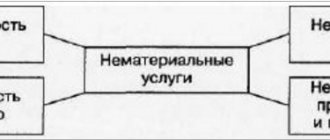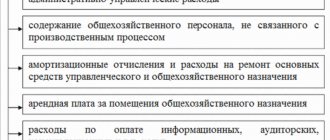The determination of the financial result of the company’s activities is carried out not only before the reformation of the balance sheet, but also at the end of the reporting period - the calendar month. In this article we will tell you which accounts are closed at the end of the reporting month and calendar year.
First of all, let's define the concept. Thus, in accounting, account closure (ACC) is recognized as an accounting operation of attributing the final balance of the accounting account to special CACs, which determine the financial results of the company.
Which accounts are closed at the end of the year?
Before starting to prepare the annual financial statements, that is, before reforming the balance sheet, the accountant is required to generate the final entries for the reporting period. In accounting, the reporting period is a calendar month (clause 48 of PBU 4/99). Consequently, before closing the financial year, the accountant will need to draw up the final monthly turnover.
Which accounts are closed at the end of the month or year? Such BSCh can be tentatively divided into three groups:
- Cash balances that cannot have balances at the end of the reporting (financial) period. These include counting. 25 “General production expenses” and 26 “General operating expenses”.
- BSCs that may have a remainder, but which can be completely closed. These include counting. 20 “Main production”, 23 “Auxiliary production”, 29 “Service facilities and production”.
- BSCs that cannot have a general balance, but have a balance in open subaccounts. These are 90 “Sales” and 91 “Other income and expenses”.
Next, we will look at how accounts are closed at the end of the year; the entries are also suitable for generating final entries at the end of the month. We will determine the procedure for generating final accounting entries separately for each account, which directly affect the financial results of the company.
accounting answers to the exam / 27 Sequence and procedure for closing accounts
27 Sequence and procedure for closing accounts
At the end of the financial year, operational calculation, matching, collection and distribution accounts and financial results accounts are closed. This procedure is an integral part of the preparation of financial statements and the accuracy, timeliness and reliability of the annual report depends on the quality of its implementation.
During the year, collection and distribution accounts take into account a significant part of the costs, which can only be distributed at the end of the year. Despite the fact that, according to the current provisions, general production and general business expenses can be written off during the year in full or according to a standard coefficient, at the end of the year it becomes necessary to adjust the amounts allocated to the corresponding accounting objects, which in a certain way affects the cost of manufactured products, works and services. This, in turn, affects the final financial results of the enterprise.
Auxiliary production accounts concentrate costs, the bulk of which should be attributed to the main production. In some farms, such accounts are also closed monthly or quarterly, and nevertheless, in December there is a need to clarify some amounts and again close these accounts. Such operations have to be done based on inventory results, including settlements with suppliers and contractors, other debtors and creditors.
After closing the collection and distribution accounts and the accounts of auxiliary production, you can calculate the cost of production of the main production, close these accounts and clarify the results in the sales accounts and other income and expenses. This is the completion of the accounting work for the year.
When accounts are closed, their balances are transferred to other accounts.
In addition to closing accounts, a number of accounts are concluded. In this case, the balance of such accounts is transferred to the other side of the account, i.e. determine the ending balance and record it as the opening balance in the register of the next reporting period.
Before closing accounts, a number of preparatory works should be carried out. First of all, the heads of the planning and financial service of the enterprise hold an instructional meeting on the order, timing and content of individual stages of work. At the same time, the composition of inventory commissions, the timing of inventories, etc. are established.
Before closing accounting accounts:
make all current accounting entries up to and including December 31. In practice, most business transactions are usually completed as of December 20th. Wages are also calculated on this date, except for time-paid workers, who are paid for a full month. Milkmaids and other livestock workers receive the volume of production in advance. Personnel on construction and repair work are accrued until December 20. Inclusive of December 31, cash and banking transactions, transactions for the sale of products, works and services, other income and expenses, and some others are taken into account;
according to the results of the inventory, on the basis of the act of the inventory commission and the order (instruction) of the manager, the identified surpluses are received and the shortages are written off according to the intended purpose - for production costs, for the guilty parties, for financial results, for increasing the value of inventory balances, etc.;
check the completeness and correctness of the entries in all accounts and draw up a preliminary (trial) balance, while obtaining the initial indicators for closing operating accounts;
reconcile the turnover and balances of analytical accounts with the submitted synthetic accounts and preliminary balance. For material accounts, analytical data is reconciled against balance sheets and statements 46-APK, for settlement accounts - by reconciling order journals with analytical accounting statements, for operational calculation accounts - by reconciling General Ledger data with personal accounts (production reports).
In the preliminary balance sheet, an expanded balance is displayed for accounts that are to be closed or for which the balance is generally displayed in an expanded manner. These are accounts 20 “Main production”, 23 “Auxiliary production”, 25 “General production expenses”, 26 “General business expenses”, 29 “Servicing production and facilities”, 60 “Settlements with suppliers and contractors”, 62 “Settlements with buyers and customers ", 76 "Settlements with various debtors and creditors", 90 "Sales", 91 "Other income and expenses", etc.
According to account 97 “Deferred expenses”, expenses incurred during the reporting period are usually written off before drawing up a preliminary balance. After this, an amount remains on the account to be written off in future reporting periods. However, such entries can be made after closing account 23 “Auxiliary production”.
The preliminary balance is compiled according to the General Ledger data, taking into account turnover from the beginning of the year. All turnovers and balances on analytical accounts are compared with the corresponding data in the preliminary balance, and only after this can operations to close accounts begin.
To prepare the final balance, the following accounts must be completely closed:
— 25 “General production expenses”,
— 26 “General business expenses”,
— 28 “Defects in production”,
— 29 “Service production and facilities”, -90 “Sales”,
-91 “Other income and expenses”,
— 99 “Profits and losses.”
In addition to the costs of work in progress, the costs are completely written off on analytical accounts to the accounts:
— 08 “Investments in non-current assets”,
-20-1 “Crop production”,
— 20-2 “Animal Husbandry”,
-20-3 “Industrial production”,
— 23 “Auxiliary production”,
— 97 “Future expenses.”
A distinctive feature of accounting is the assessment of economic assets at their cost. Thus, before the accounts are closed, i.e. in the preliminary balance sheet, the costs of auxiliary production are included in the costs of the main production at planned cost, the cost of seeds and feed of own production is also written off at planned cost. Finished products, capitalized at planned cost, are written off for processing and to the sales account in the same estimate. As accounts are closed, products, works and services receive actual valuation. After closing the operating accounts, the final balance sheet will reflect the balances of inventory, cash, stock and settlement accounts, while the calculation accounts will be shown only in the amount of work in progress, construction in progress, and repairs in progress.
Accounts for accounting for cash, settlements with organizations and individuals are not affected in the process of closing accounts, and on account 01 “Fixed Assets” and accounts for accounting for material assets, their value accepted during capitalization is only specified.
When establishing the order of closing accounts, it is taken into account that the products received during the year - feed, seeds, semi-finished products, etc. - are spent on their production needs until the end of the year, not to mention the work and services of auxiliary production, which are mostly consumed main industries.
Therefore, the fundamental principle when closing accounts is the following: for the account being closed, deviations are not written off to previously closed accounts. And one more thing: deviations in the accounts of auxiliary production are not written off for other auxiliary production, except for the costs of repair shops and the costs of repairing buildings and structures. These accounts are closed by writing off the recorded costs to other accounts, including auxiliary production accounts.
Thus, part of the cost of products, works and services in the accounts is not adjusted and remains in the planned estimate. For example, the cost of electricity supplied to a repair shop, vehicle services to a power plant, the cost of feed supplied to draft animals.
To reduce the number of such conventions, accounts with the largest number of consumers and the smallest number of counter-costs are closed first, and accounts with a minimum of consumers and a large number of counter-costs are closed last.
We write off general production costs
The BSC is closed monthly, and all accumulated overhead costs must be written off to the accounts of the relevant production facilities. In other words, costs are written off to the accounts of those production facilities that were serviced.
Typical accounting entries:
| Operation | Debit | Credit |
| ODA written off in favor of core production | 20 | 25 |
| ODA included in the costs of servicing auxiliary production facilities and workshops | 23 | 25 |
| ODA aimed at maintaining service farms is written off to the appropriate accounts | 29 | 25 |
Write-off of general business expenses
The procedure for concluding an account. 26 depends on the method of forming the cost of finished products (sold services, work), which must be enshrined in the accounting policy of an economic entity. So, there are two key ways:
- At full production cost, the following standard transactions are generated monthly:
| Operation | Debit | Credit |
| OCR written off for main production | 20 | 26 |
| OCR included in the costs of auxiliary production | 23 | |
| OCR written off to service farms | 29 |
- According to the reduced production cost, all general operating costs are charged directly to the operating cost of sales. In this case, a monthly accounting entry is generated:
| Operation | Debit | Credit |
| OCR written off as the cost of products, works, services | 90-2 “Cost of sales” | 26 |
What are accounting entries?
Every day millions of payments are made around the world.
They are made by both ordinary people and businesses. Any business must take into account its own payments to keep them under control. Therefore, any payment is accounted for through accounting entries. Accounting entries are accounts drawn up on actual papers, reflecting the amount of a business transaction that is subject to accounting.
Any information about actions performed on accounts is marked with a double entry, i.e. in the debit of one account and in the credit of another, for an identical amount. With its help, all accounts assume a single interconnected structure.
The relationship between debit and credit settlements, formed in the process of double entry, is called a correspondent accounts account, and the accounts participating in this relationship are called correspondent accounts.
To understand the concept of accounting for debit and credit accounts, the following features of account accounting were introduced into accounting:
- asset – reflects the values owned by the organization;
- liability – displays the organization’s debt to creditors;
- active-passive account – displays one-time debit and credit debt.
What is writing off accounts receivable with an expired statute of limitations and in what order this procedure is carried out - read the link.
Closing production accounts
Let's make a reservation right away that the balance for BSC 20, 23, 29 is unfinished and does not require mandatory write-off at the end of the reporting or financial periods.
How to determine? If the production cycle does not coincide with the reporting periods, then a debit balance is formed on the BSC - the cost of work in progress. And if the production process fits into a calendar month (year), then, according to the BSC, there should be no leftovers. Typical entries for writing off production costs:
| Operation | Debit | Credit |
| Production costs written off to cost of sales | 90-2 “Cost of sales” | 20 |
| 23 | ||
| 29 |
Note that companies whose activities are related to the provision of services can additionally establish in their accounting policies which accounts are closed at the close of the month. In other words, to secure that BSCs 20, 23, 29 will be closed monthly, without any work in progress balances.
We close accounting account 90 “Sales”
At the end of the reporting month, the company is obliged to determine the financial result of its activities. This operation is a comparison of subaccounts. 90. That is, the accountant compares the indicators of subaccount 90-1 “Revenue” and the value of cost of sales, which is defined as the sum of subaccounts 90-2 “Cost”, 90-3 “VAT”, 90-4 “Excise taxes”, 90-5 “Trade and export duties."
If the company made a profit (revenue exceeded total costs), then the accountant generates the following entry:
Dt 90-9 Kt 99 - profit from sales is reflected.
If the company operates at a loss (revenue is lower than total costs), then the following entry is recorded:
Dt 99 Kt 90-9 - reflects the monthly loss for the company’s activities.
Consequently, subaccounts. 90 may have a balance at the end of the reporting month, but the total value of the synthetic BSC must be equal to zero.
Which accounts are closed at the close of the year? The following accounting entries are generated for this account at the end of the year:
| Operation | Debit | Credit |
| The “Revenue” sub-account was closed at the end of the year | 90-1 | 90-9 |
| The cost of production is included in the financial result | 90-9 | 90-2 |
| VAT is written off in favor of profits and losses | 90-9 | 90-3 |
| Excise taxes are included in the financial results of operations | 90-9 | 90-4 |
| Export trade duties written off at the end of the year | 90-9 | 90-5 |
How are records kept?
Accounting for 09 occurs by type of assets and liabilities. Typically, several standard types are used, but the list can be expanded if new differences arise:
- Fixed assets.
- Estimated liabilities and provisions.
- Future expenses.
- Loss of the current period.
- Depreciation of fixed assets.
- Materials.
- Special equipment and special clothing.
In order for the VVR to be included in account 09, it is necessary to carry out the following posting:
- Dt 09 Kt 68.04 “Calculations for income tax.”
Examples of conducting 09 can be found in the video
We close account 91 “Other income and expenses”
The company must determine monthly financial results based on income and expenses from other activities. This financial result is determined as the difference between the subaccounts of the account. 91. That is, we compare 91-1 “Other income” with 91-2 “Other expenses”.
The results of activities are reflected in the following accounting entries:
| Operation | Debit | Credit |
| Profit at the end of the month from other types of company activities is reflected | 91-9 | 99 |
| Reflected loss from other activities | 99 | 91-9 |
At the end of the financial year, the accountant makes the following entries:
| Operation | Debit | Credit |
| Profit for the year from other types of company activities was written off | 91-1 | 91-9 |
| Reflected loss from other activities for the year | 91-9 | 91-2 |
In turn, count. 99 “Profit and Loss” remains unclosed. This BSCH closes on December 31st. The accountant generates the following entries:
- Dt 99 Kt 84—– reflects the net profit of the reporting year;
- Dt 84 Kt 99 - the company's uncovered loss is reflected.
Results
The results of an enterprise's economic activities are collected on several accounting accounts.
The main thing to remember is that profit is collected on credit, and loss on debit. This means that the debit balance on the account. 99 during the year, as well as the accumulated account balance. 84 speak about the organization’s loss, and credit residual indicators speak about its profit. You can find more complete information on the topic in ConsultantPlus. Free trial access to the system for 2 days.








